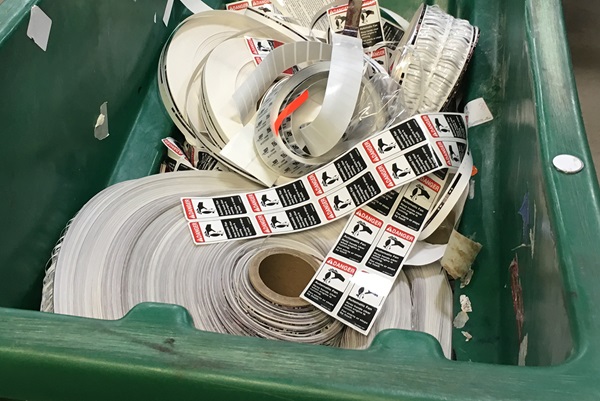Please select your location & language for the best website experience

Labeling errors can be costly, which is why it's imperative that these errors are kept to a minimum. From a missing or incomplete label, your product has the potential to put consumers at risk, be recalled, or receive hefty fines… maybe all three! To help your company achieve its labeling goal of reducing errors, TEKLYNX has developed three labeling best practices that minimize mistakes. Let's start with the easiest way to reduce errors in your labeling process, which involves using a database.
If you'd rather talk to an expert on how to reduce labeling errors, get in touch with us today!
Human errors are a common culprit for incorrect labels. Manually entering data, text, or images on your labels, even when done carefully, often leads to mistakes. By creating database-driven label templates, manually entering data is a thing of the past. If you already have an existing database, you can easily create variable fields on your label and connect them to relevant fields within your database. Now, the print user just has to select the correct database record and print, avoiding any potential human errors.

What if the wrong information accidentally gets printed on the label? The next labeling best practice comes into play to inhibit any label printing if the data is wrong.
Data validation means checking the accuracy and quality of data before using it, a critical factor when determining the usefulness of the data. By using data validation in your labeling process, users are forced to enter data in a specific format. For example, a date formatted as MM/DD/YYYY or a phone number formatted as (###) ###-####. Additionally, you should set your label templates to not allow printing if the data cannot be validated, in order to reduce waste and time spent re-printing labels.
Leveraging a When Printed data source allows you to set up one or more fields in which the print user can enter values at the time the label is printed. At print time, the form can be displayed for the user to enter values in the fields. Forms can be used to apply a product name, part number or any other type of information that may vary, but which cannot be populated by an automatic data source (such as a database, clock, or counter).
How to create a When Printed data source in LABELVIEW or CODESOFT and input properties to define the parameters of the values that can be entered into the form:
If an erroneous label is printed, having records of everything that’s happened during the lifecycle of your labels can help your company quickly resolve the error, which leads into the last best practice.
When an error occurs, the best way to resolve it is to retrace your steps all the way back to the beginning of the process. But how can you retrace your labeling steps without any records? Not only do records assist with label security and traceability, but they are also tools that prevent errors in the future. With records, if an incorrect label is printed, you have the power to identify by whom and when the incorrect label was printed. Then, you can identify who approved the incorrect label design. Finally, you can identify who made the change and what the design change was to the label that made it incorrect, coming full circle in the labeling process. Having records also gives visibility into which products are affected and how to quickly identify them in case of recall.
LABEL ARCHIVE is a label security and traceability enterprise software that specializes in reducing errors in your labeling environment. LABEL ARCHIVE enforces a label approval process where incorrect labels never enter production and keeps records of every label that does enter production.
Labeling errors almost always have costs associated with them, whether that be through lost money, lost time, or lost business. The best practices in this blog, along with other strategies to help your company barcode better, can be found in TEKLYNX Best Practices for Barcode Labeling eBook. By following the best practices of creating database driven label templates, using data validation, and maintaining labeling records, your company will increase accuracy by eliminating the causes of errors in your labeling process.
Nick Recht is the Sales Manager for the Americas region at TEKLYNX RFID and barcode label solution provider. He leverages his passion for using technology to add value to businesses and his 15 years of AIDC experience to help organizations of all sizes barcode better. When he is not working, he is driving one of his daughters to a practice of some sort or doing a project around the house.
Leveraging your existing Excel spreadsheets in your label printing process can help you save time, save money, and maximize your efficiency.
READ MORE
One of manufacturing's biggest fears is a product recall - not only because of the potential for bad PR, but because of the wasted product, money, time, and potential safety risks for the users of their products.
READ MORE
A common labeling challenge I’ve been hearing recently is the need to move toward a paperless label approval process. Instead of printing out sample labels, physically delivering them to each person in the approval process, and returning to the label design software to implement changes, companies are looking to digitally transform this process and make label approval paperless.
READ MORE© Copyright 2025 TEKLYNX CORPORATION SAS. All Rights Reserved.
What do you think? Leave us a comment.
Comments will be reviewed and are subject to TEKLYNX’ comment policy. Your email address will not be published publicly.